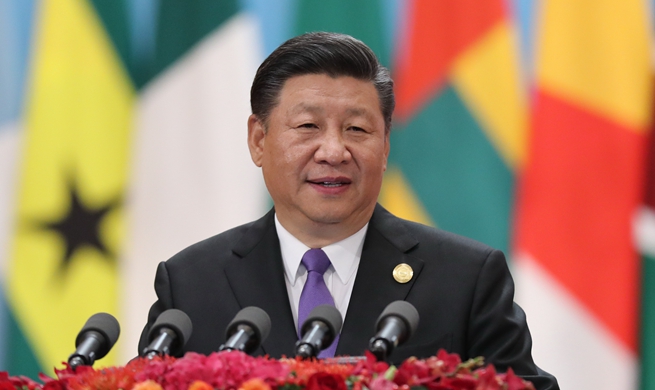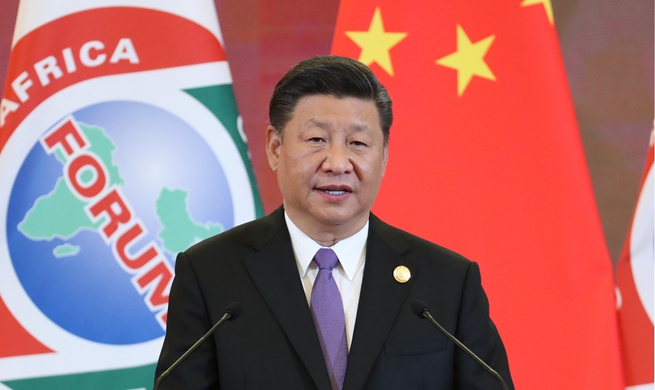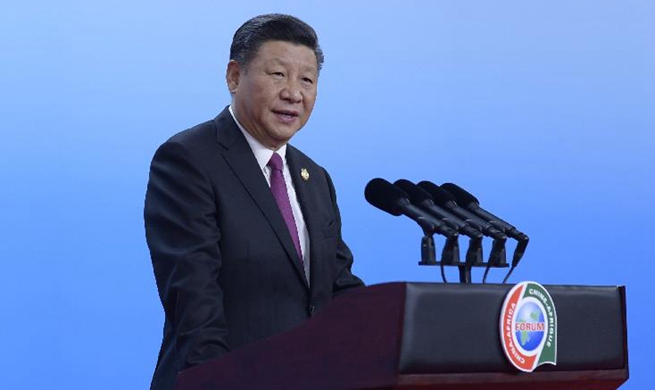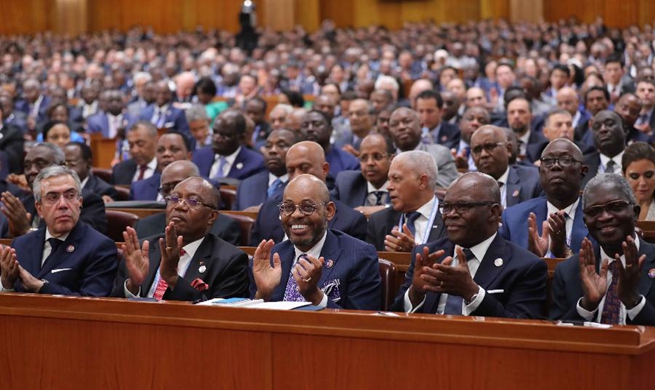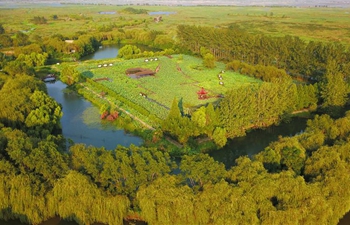LONDON, Sept. 4 (Xinhua) -- A design project from China exploring the emotional significance of the Nanjing Yangtze River Bridge has won attention and award at the London Design Biennale (LDB) which opened here Tuesday.
The Memory Project of Nanjing Yangtze River Bridge, created by Nanjing University professor Lu Andong's team, contains three rooms connected by a 17-meter long corridor and are featuring respectively sounds, images and historical perspectives of the bridge which was built 50 years ago.
The first exhibition room displays the sound memories related to Nanjing Yangtze River Bridge, including five songs written for the bridge and the sounds collected from the surrounding environment of the bridge. It also includes 13 old radios provided by a collector with motifs of the bridge, which constitute the visual memories of that era's sounds.
The second room displays portrait photos from all over China, showing people who could not visit the bridge in person at that time would take pictures in a photography studio in their hometown in front of a background painting of the bridge.
"By taking these pictures, people participated in the same classic image that was widely spread," said the designer and curator Lu Andong, "Meanwhile, these photos also witnessed important moments in people's lives, such as reunions and graduations."
Lu started this memory project four year ago when his studio has collaborated with historians and local artists amassing an archive of artifacts, memories and audio and visual evidence.
"This exhibition considers the emotional significance of an iconic structure and how it ingrained itself on the nation's collective memory and how contemporary design-based place-making has reclaimed the monument as a place of memories and emotions," he introduced.
The Nanjing Yangtze River Bridge was completed in 1968 during the Cultural Revolution and was the first modern bridge over the Yangtze River in China designed and built without foreign assistance.
At more than 4.5-km in length, the double-deck road-rail bridge quickly became a national symbol of technological achievement, as its image and the story of its construction disseminated through mass media, such as posters and photography. In the following decades, this exceptional monument sparked an emotional state among a whole nation and became the pinpoint of a shared memory and people from all over China.
John Sorrell, president of LDB, said the team from Nanjing University has created an exhibition that "responds creatively to the Biennale theme of Emotional States, and which will be of great interest to all our visitors."
Dr. Christopher Turner, Artistic Director of the LDB, said the Nanjing entry was awarded an Honourable Mention for "the excellence of its conception and delivery".
"Professor Lu presented a fascinating tour through the cultural symbolism and importance of the Nanjing Yangtze River Bridge, a great example of how history can inform and educate the present. The jury was impressed with the high, scholarly standard of the display and can not wait to visit China and see this important museum when it opens later this year," added Turner.
A highlight of the global design calendar, LDB sees some of the world's most exciting and ambitious designers, innovators and curators gather in the British capital to show how design impacts human being and every aspect of human lives.
In response to this year's theme Emotional States, participants from 40 countries, cities and territories will exhibit their design installations at Somerset House from Sept. 4 to Sept. 23 to reveal how design influences emotions.






